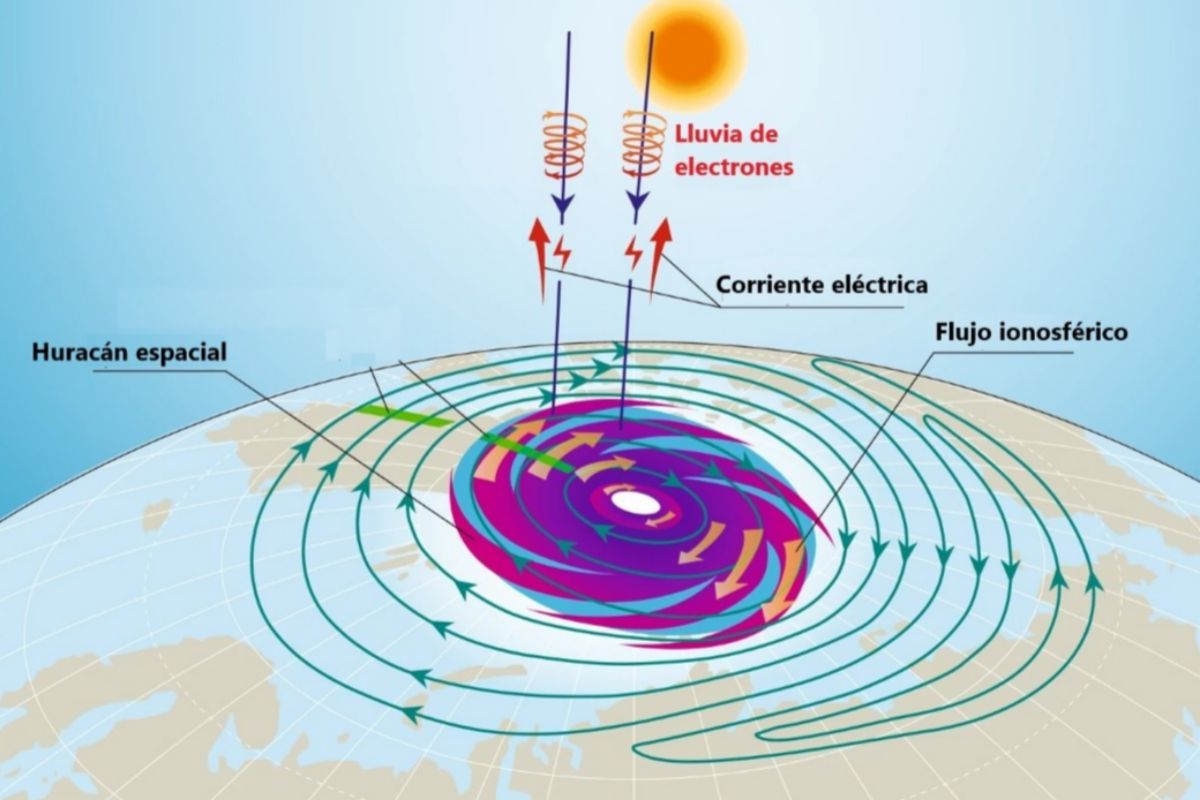Solar System: Planet 9, just a mirage?
The astronomer Rafael Bachiller reveals to us in this series the most spectacular phenomena of the Cosmos. Topics of exciting research, astronomical adventures and scientific news about the Universe analyzed in depth.
Analyzing data from 2014, Chinese scientists have detected the first space hurricane observed on Earth.
It is a huge plasma cyclone at the north pole that was caused by the penetration of particles from the solar wind subjected to the Earth's magnetic field.
Gigantic polar auroras
An atmospheric hurricane is a circular system of storms that rotate around a point of low pressure (the eye of the hurricane).
They are spectacular phenomena that are caused by the combined action of the earth's rotation, gravity and the condensation of atmospheric water vapor at high altitudes.
Hurricanes (or cyclones), have diameters ranging from about 500 to almost 2,000 kilometers, produce strong winds and rain, and can cause major catastrophes over large regions on Earth.
With characteristics similar to those of an atmospheric hurricane, scientists had predicted the existence of space hurricanes.
They would be cyclonic structures that, instead of being formed by clouds, would be constituted by large plasma eddies, masses of charged particles and at very high temperatures from space.
These space hurricanes could form on planets with appreciable magnetic fields.
Space hurricane model Nature / Qing-HeZhang et al
In the case of the Earth, the solar wind can inject these masses of plasma that, due to the effect of the Earth's magnetic field, preferentially penetrate through the poles.
Space hurricanes would form on Earth at the level of the ionosphere, that is, at a much higher altitude than normal atmospheric hurricanes.
These phenomena could be considered as gigantic circular polar auroras.
Electron shower
Nothing that could be considered a true space hurricane had been observed on our planet until a few days ago, when a team coordinated by Qing-He Zhang from Shandong University (China) published a work in which it claims to have detected, of retrospectively, a great swirl of plasma over Earth's north pole.
The phenomenon took place on August 20, 2014 and was observed by four meteorological satellites simultaneously for eight hours, until it gradually disappeared.
The large plasma cyclone, with its base in the ionosphere, was about 1,000 kilometers in diameter, centered near the magnetic north pole, and featured several spiral arms.
The whole assembly rotated counterclockwise around the center: the eye of this peculiar hurricane where currents of electrons were precipitated (playing a role equivalent to that of rain in meteorological hurricanes).
This shower of electrons produced a gigantic circular-shaped aurora borealis.
The researchers built a 3D magnetohydrodynamic model to convincingly explain the formation of the hurricane from the interaction between particles in the solar wind and the magnetic field over Earth's north pole.
This space hurricane did not produce any harmful effects on the planet.
However, the electron showers associated with these phenomena could affect the operation of constellations of positioning satellites (such as GPS), radio communication systems and radars.
The storm was observed during a period of low geomagnetic activity, which leads to the suspicion that these phenomena could be very common (more during periods of high activity).
And if these space hurricanes are easily formed on Earth, this suggests that they may be common on other planets in the solar system and, of course, on exoplanets in which the right conditions exist.
The article by Qing-He Zhang et al. Entitled A space hurricane over the Earth's polar ionosphere, which has been published in a recent issue of the journal Nature Communications, can be found at this link.
Rafael Bachiller is director of the National Astronomical Observatory [www.oan.es] (National Geographic Institute) and academic of the Royal Academy of Doctors of Spain.
According to the criteria of The Trust Project
Know more
Science and Health
science
Astronomy Mars visits the Pleiades
EnvironmentRinpneumonitis, the 'covid' of horses that has paralyzed European equestrianism
Archeology: the games that decided the afterlife of the ancient Egyptians
See links of interest
Work calendar
TD Systems Baskonia - FC Bayern Munich
FC Cartagena - Ponferradina
FC Augsburg - Borussia Mönchengladbach
Atalanta - Spezia
Real Madrid - Elche

